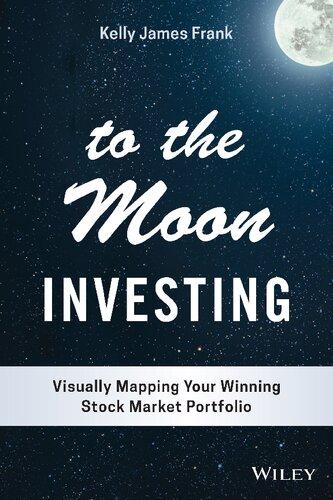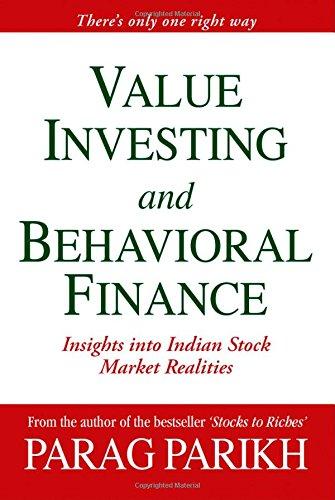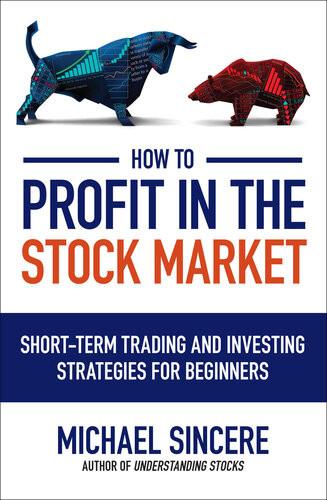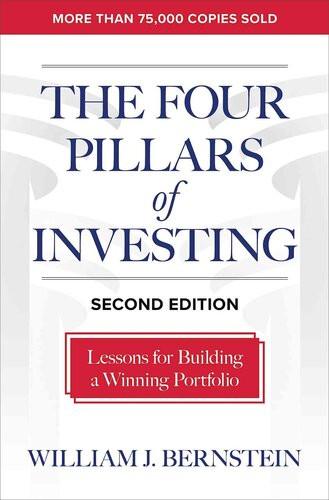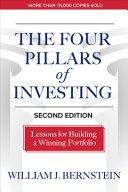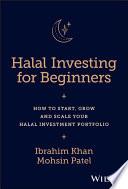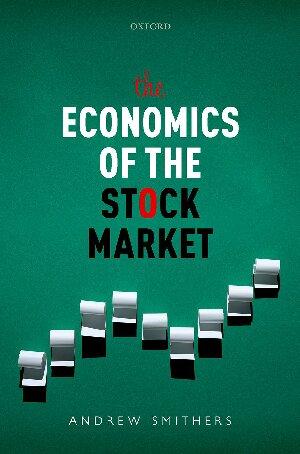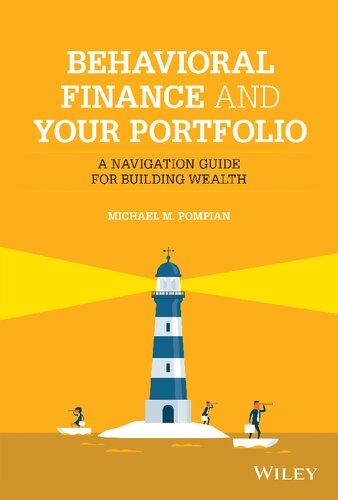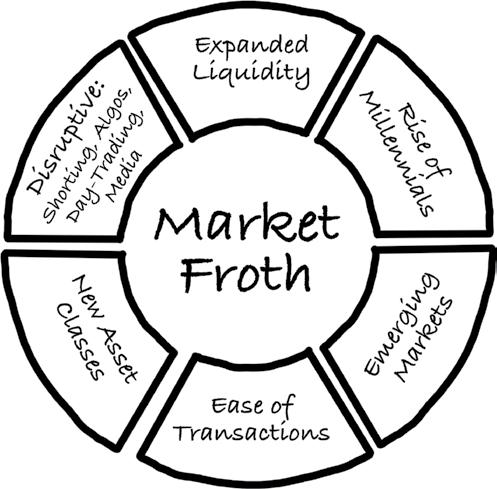To The Moon InvesTIng
Visually Mapping Your Winning Stock Market Portfolio
Kelly James Frank
Copyright © 2023 by John Wiley & Sons, Inc. All rights reserved.
Published by John Wiley & Sons, Inc., Hoboken, New Jersey. Published simultaneously in Canada.
No part of this publication may be reproduced, stored in a retrieval system, or transmitted in any form or by any means, electronic, mechanical, photocopying, recording, scanning, or otherwise, except as permitted under Section 107 or 108 of the 1976 United States Copyright Act, without either the prior written permission of the Publisher, or authorization through payment of the appropriate per-copy fee to the Copyright Clearance Center, Inc., 222 Rosewood Drive, Danvers, MA 01923, (978) 750-8400, fax (978) 750-4470, or on the web at www.copyright.com. Requests to the Publisher for permission should be addressed to the Permissions Department, John Wiley & Sons, Inc., 111 River Street, Hoboken, NJ 07030, (201) 748-6011, fax (201) 748-6008, or online at http://www.wiley.com/go/permission.
Limit of Liability/Disclaimer of Warranty: While the publisher and author have used their best efforts in preparing this book, they make no representations or warranties with respect to the accuracy or completeness of the contents of this book and specifically disclaim any implied warranties of merchantability or fitness for a particular purpose. No warranty may be created or extended by sales representatives or written sales materials. The advice and strategies contained herein may not be suitable for your situation. You should consult with a professional where appropriate. Neither the publisher nor author shall be liable for any loss of profit or any other commercial damages, including but not limited to special, incidental, consequential, or other damages. Further, readers should be aware that websites listed in this work may have changed or disappeared between when this work was written and when it is read. Neither the publisher nor authors shall be liable for any loss of profit or any other commercial damages, including but not limited to special, incidental, consequential, or other damages.
For general information on our other products and services or for technical support, please contact our Customer Care Department within the United States at (800) 762-2974, outside the United States at (317) 572-3993 or fax (317) 572-4002.
Wiley also publishes its books in a variety of electronic formats. Some content that appears in print may not be available in electronic formats. For more information about Wiley products, visit our web site at www.wiley.com.
Library of Congress Cataloging-in-Publication Data
Names: Frank, Kelly James, author.
Title: To the moon investing : visually mapping your winning stock market portfolio / Kelly James Frank.
Description: Hoboken, New Jersey : Wiley, [2023] | Includes index.
Identifiers: LCCN 2022043313 (print) | LCCN 2022043314 (ebook) | ISBN 9781119911920 (cloth) | ISBN 9781119912019 (adobe pdf) | ISBN 9781119912002 (epub)
Subjects: LCSH: Investments. | Portfolio management.
Classification: LCC HG4521 .F697 2023 (print) | LCC HG4521 (ebook) | DDC 332.6–dc23/eng/20220923
LC record available at https://lccn.loc.gov/2022043313
LC ebook record available at https://lccn.loc.gov/2022043314
Cover Design: Wiley
Cover Image: © vovan/Shutterstock
Illustrator: Jocelyne L. Frank
This book is dedicated to all those who relentlessly create ideas to take their lives from what is to what could be.
MyTo the Moon project was ignited by a simple question: “What should a person know about the market if they wish to achieve extraordinary investment results?” It became progressively clear on my journey to provide answers that I was blessed with incredible relationships that put me in a position to respond.
The book would not have soared without the visionary support of Samantha Enders at Wiley. Her talent for articulating the big picture and the best path to get there was remarkable. The editing process with Kim Wimpsett, Kamalini Christilda, Rahini Devi, Mike Isralewitz, and Donna J. Weinson was fun and integral to making the book the best it could be. Plus Purvi Patel, Samantha Wu, and Bill Falloon of Wiley were so supportive and reinforced to me why Wiley is such an outstanding publisher. I am indebted to all of you for your improvements to my manuscript!
I note the incredible treasure trove of information that I resourced from the Federal Reserve Bank of St. Louis, led by President and CEO James “Jim” Bullard. Their FRED database and its ease of use, along with the timely help from Adrienne Brennecke and Katrina Stierholz, is truly appreciated. The US Bureau of Labor Statistics, led by Commissioner William W. Beach, was also an information source, and I especially thank Jonathan Church and Malik Crawford of the BLS. The US Bureau of Economic Analysis, headed by Acting Director and Deputy Director Dr. Mary Bohman, had helpful data and Jeannine Aversa and Ann McDonel were kind to answer my questions. Randy Nicholls (CPA, CA) was generous with his time on financial statement composition. The help of Talia Price and the Pew Research Center is
greatly appreciated. Thank you to Joss Frank for the inspiration and artwork on the sketches and drawings, and Dylan Frank for views on option strategies. There were many past colleagues, friends, and family that were instrumental to my personal development; they made me better. Chris gardner, Ross Izzard, Philipp gruner, Ken MacLean, Marie Ewasuik, Merrilee Ashworth, Bruce Hanson, Bob Murphy, Stephen Crocker, Alec Milne, gene Schneidmiller, Ron Rattray, Al Balanko, Jim Cebuliak, Don Ikoma, Ryan Byrne, Stella Miranda, Pat Souliere, Dan Connelly, Tony Warren, Kathleen Cels, and Kevin Frank are all amazing and I’m grateful for our connection! My memories of my parents, Jim and Levine, and how they did everything possible to build my curiosity, is a gift that endures.
Despite all the oxygen provided by my phenomenal cadre, you may still find a ding or two in the rocket; I own them!
To my wife, Bonnie, and children, Danielle, Joss, and Dylan; the rocket sputtered at times, but your unconditional love made it go. Much love and gratitude back at ya!
After his corporate career, Kelly James Frank launched 13.8 Capital, an asset management firm focused on growth investments. He is active in finding solutions for the homeless challenge and gratefully wanders between the Rocky Mountains and Oahu.
The purpose of this book is to help you, whether you are a market rookie or a seasoned pro, become a better investor through an innovative set of exciting and intuitive investment maps.
Figure P.1 shows the trajectory of the book. Part I launches by explaining risk and how it affects you as an investor, the elements of preparationthinking, and figuring out Why you want to invest. Then, in part II, we fuel up our financial literacy and dovetail into corporate growth versus value strategies. In part III, we burst into setting your radar for opportunity and look at vital financial metrics and business models, including our Five-Stack Discovery of Macro, Indices and Sectors, Value, Technical, and Brand elements for asset evaluations. In part IV, we complete our visual maps and enable you to boldly rocket to the Moon! Finally, in part V, we activate your flight with practical investment considerations.
FIGURE P.1 Trajectory of To the Moon Investing
This book and its approach are vividly different from the usual wall-ofwords investment books:
■ each chapter ends with a useful note capsule.
■ I resource and integrate brilliant guidance from leading-edge business authors.
■ There are charts and sketches to supplement your retention with places for you to record your market observations and understandings.
■ The book describes extrinsic factors of macroeconomic policy on investment decisions.
■ Business books usually provide a glossary of keywords. Instead, there is a contextual dialogue between two investors written in an easy-to-read screenplay format.
■ There is an elegantly simple illustration of accounting statement connectivity, along with crucial comparative ratio targets.
■ asset choices are illustrated through uncomplicated and adaptable maps (a.k.a. canvases) that optimize your market understanding and financial acuity.
■ The complexity of options is deconstructed through sequence-thinking of your investment objectives.
This book’s goal is to find that magic space of being both fun and informative, and if you read with a beginner’s mind, i.e. knowing that all things are possible, you will get to the Moon that much quicker!
The metaphor of “to the Moon” for investing comes from the exciting influx of young investors that stoked the market in early 2021. In addition to their energetic investment strategies, they dropped a fresh word stack that brought vibrancy to the market patois.
Periodically, you’ll come across a point or comment that should stand alone due to its importance, beginning with the one following on footnotes. There is a tremendous amount of source information that I’m thankful for, and all are referenced for further review if you so wish.
The book’s footnotes document from where certain Information is derived.
Feel free to read the footnotes or keep your rocket at a constant speed and not read them, whichever works best for you!
Let’s light the rocket!
Newspaper National Hockey League Reporter, post-game: Derek, how can you check and fight those beasts out there?
I mean, you’re not that big of a guy. Derek, handing his hockey stick to the Reporter: This is the great Equalizer.1
Derek Sanderson, Boston Bruins
This book provides the stock market version of the Equalizer (a.k.a. EQ); in effect, a strategy map for investors to reach a deeper understanding of markets, implement comparative financial tools, improve their trend forecasting, and create an optimal portfolio.2
The space trek to improved outcomes begins with a simple question: is it even possible to consistently achieve superior investment results? Well, the heavily debated efficient-market hypothesis proposes that it’s impossible to
1 Paraphrased from Derek Sanderson, “The Dead-End Kid Who Wants to Be a Superstar,” Maclean’s (November 1969), macleans.ca. Derek was a perennial All-Star during 22 years of professional hockey, winning two Stanley Cups, as well as the NHL Rookie of the Year, Calder Trophy, in the 1967–1968 season. Derek’s O-Pee-Chee playing card lists his weight at 170 lbs. during his rookie season (https://www.ebay.ca/itm/393592125741?oid=165059036443). For a fantastic and fun read on hockey, and meeting life’s challenges, I strongly recommend Derek’s book Crossing the Line, with Kevin Shea (Harper Collins, 2012).
2 Note that when I use the phrase “stock market,” I’m referring to listed stocks on the NYSE, NASDAQ, OTC, and TSX, whereas “assets” refers to stocks as well as money-market instruments, derivatives, crypto, etc.
beat the market as stock prices reflect all known information. In other words, investors are not going to find undervalued stocks as current prices have already “built in” any and all impacting events specific to that stock. A parallel concept, known as the “efficient frontier,” supposes that there is an optimal portfolio of diversified stocks that can yield the highest return for a given risk class.
Both theories use the word “efficient” in the context of the market. But as an Investor, are you “efficient”? Do you have the curiosity, support network, intelligence, and tools to generate above-average returns?
To up our competitive game, many of us search through bookstores, pick at our cohort’s experiences, or mine the internet for direction and answers. That’s what I did, but there were always remaining questions:
■ Are some financial indicators better than others?
■ How can I leverage share volume into my analyses?
■ Is there a way to de-risk my stock selection choices?
■ What are the attributes that I require to be successful?
■ How does sector rotation affect stock pricing and direction?
■ How do accounting statements interlock (for stock selections)?
■ Is there a way to, literally, map out my asset selection choices?
■ What global economic (a.k.a. macro) metrics should I be aware of?
■ Can the theories of business modeling act as an overlay for personal investing?
As I brainstormed my readings and analyses of asset selection best practices, it became clear that although the information gaps could be sealed, the leap toward choice actualization was across a chasm of risk, uncertainty, and confusion. Essentially, I needed a map that would guide my rocket through the fog of choices and toward superior outcomes.
Remember the world before Google? Say you were driving across the state to your college buddy’s house. You might get a paper copy of a map, draw your route in red, and be on your way. Still though, for the “last mile” you were pretty much on your own. So you would call and get directions: “OK, so I turn left at the 7-11, drive four blocks till I see McDonald’s, and
then I turn right, and go for two more blocks and it’s the one the left side with the orange b-ball hoop above the garage? Yeah, I think I got it.” Today, anyone with a smartphone can arrive safely and on time: it’s all laid out for you, both verbally and directionally on your screen. Similarly, imagine if you could create an X to Y illustrated asset-choice map that ranked your stock targets, crystallized your decision metrics, eliminated blind spots, and enlightened you to the best possible choices!
And that’s where I come in: my quest to bridge that divide yielded a set of visual canvases that scale up your stock-selection acuity, collectively referred to as the Equalizer (EQ).
The EQ guides are prompted from three talented backdrops:
■ The visual thinking logic of Dan Roam (The Back of the Napkin)3
■ The creative idea generation from Michael Michalko (Thinkertoys)4
■ The business modeling canvases from Alex Osterwalder and Team (Strategyzer book series)5
As a business executive, I frequently synthesized these three brilliant models to de-risk alternatives and drive superior outcomes. And now, the EQ will prepare you to blast through the efficient frontier to land on the Moon! Perhaps even more importantly, utilizing these canvases will level up your imagination toward what could be in your investment life.
Papa John’s: Better Ingredients. Better Pizza.
EQ: Better Discovery. Better Outcomes.
Here’s an EQ example: in early 2021, the market was excited about a bumper crop of Electric Vehicle stocks, comprised of companies that would build the vehicles and those that would provide the fuel source. Their CEOs
3 Dan Roam, The Back of the Napkin (Penguin Group, 2008).
4 Michael Michalko, Thinkertoys (Ten Speed Press, 2006).
5 The Strategyzer series includes Business Model Generation by Alex Osterwalder,Yves Pigneur, and Alan Smith (Wiley, 2010); Proposition Design by Alex Osterwalder, Yves Pigneur, Greg Bernarda, Alan Smith, and Patricia Papadakos (Wiley, 2014); Testing Business Ideas by Alex Osterwalder and David Bland (Wiley, 2019); and The Invincible Company by Alex Osterwalder, Yves Pigneur, Fred Etiemble, and Alan Smith (Wiley, 2020).
all danced on the broadcast circuit trumpeting why they were best positioned to succeed in a market projected to exceed $800 billion in 2027.6
Everyone was keen on finding the next Tesla. Yet, when we retrace in figure I.1 how some of these organizations fared over an eight-month period, the yields were shockingly poor.
If you were an investor in any one of the nine companies and HODL’d for the eight months, what was your criteria for pressing Go in the first place on a particular stock? How did you layer in the competitive landscape? What did you forecast as a worst-case scenario? What was the X-Factor that separated your stock choice from the others? Or were you driven by fear of missing out (FOMO)?
My Electric Vehicle evaluation, using an EQ canvas that integrated possible macro effects, strategic financials, risk, and total addressable market considerations, concluded that the best choice was not to purchase any Electric Vehicle stock as the vertical was in its pre–Big Bang phase, primarily due to a lack of well-defined manufacturing schedules.7
As I continued to evaluate the entire group, I came to a Captain Obvious deduction: every vehicle, regardless of manufacturer, needed tires.8 The Electric Vehicle EQ pushed me to a new canvas of tire companies, and I eventually moved forward with the Goodyear Tire & Rubber Company (GT). During that horrid 8-month Electric Vehicle stretch, I gained 71% with GT ($11.27 > $19.24) and then exited my position. My original EQ
I.1 EV Share Prices
Source: Data from Yahoo! Finance 2021
6 https://www.alliedmarketresearch.com/electric-vehicle-market.
7 Of course, the clock is still running on these Electric Vehicle stocks, and some of them— perhaps even all of them—may eventually generate outsized returns. In fact, Lucid rose to ~$40 in early January 2022. Share prices were retrieved from Yahoo Finance! March 12–14, 2022.
8 Captain Obvious is the amusing character, played by Brandon Moynihan, in the Hotels .com advertisements.
FIGURE
surpassed the efficient frontier. Of course, 71% gains are not the norm, but relatively small percentage changes can make an astonishing difference as explained by the “Rule of 72.”
The Rule of 72 is a simple formula of 72 divided by a rate of return that approximates the number of years for an investment to double. For example, let’s say you have your hard-earned money in a deposit certificate or bond, and assume the rate of return is 4% per year. The Rule of 72 suggests it would take about 18 years for your money to double. Or maybe you’re already in the stock market and are accruing 9% gains a year, meaning an investment doubling of 8 years. If you could sharpen your decision tools and yield just 3 percentage points more per year, a 12% return would double in 6 years.
Setting aside tax considerations and risk factors, it is undeniable that to grow wealth you must participate in the asset market. Staying on the sidelines is the wrong move. The timing for entering the market, or expanding your commitment to it, couldn’t be better! Recent and impactful factors are amplifying stock market opportunity through their collective “froth.” Picture a resort island such as Martha’s Vineyard off the coast of Massachusetts in summer versus winter. Even if you’ve never been there, you know that in the summer it’s packed with free-spending people, businesses are open for longer hours, pop-up stores appear, tours become available for fishing and whale watching, there are new and broader restaurant menus, ferries offer more arrivals and departures . . . and the result is a profound increase in the circulation and quantity of money on the island. That’s all due to tourism “froth.”
Think of froth as the octane in your rocket fuel. Froth is what agitates and powers the market, and there are six catalysts that have accelerated market froth, as shown in figure I.2. Without them, the market would not be nearly as exciting, broad-based, wealthy, and accessible as it is.
■ Five Positive Catalysts
The following five market catalysts are positive inflection points contributing to investment opportunity.
Expanded Liquidity
There is more liquidity in America than ever before, as captured by the growth in the money supply (a.k.a. M2), helped by mighty stimulus bills and
Federal Reserve asset purchase programs. Figure I.3 shows M2’s expansion from 1960 to December 2021.9
The astonishing visual is condensed to trillions for selected years in figure I.4. In just five years, from December 2016 to December 2021, the uS money supply, M2, went from $13.2 trillion to $21.6 trillion, a 64% increase and a ballooning 41% in just the last two years! The Compounded Annual Growth Rate (CAGR, explained in chapter 3) highlights the accelerating pace of M2 expansion. Of course, there are many factors that contribute to M2’s increase, including the uS population rise from 179 million in 1960 to today’s 332 million.10 Still though, in stock parlance, since 1960, the population growth has been a 2-bagger, and M2, rising from $312 billion in December 1960 to $21.6 trillion in December 2021, is a whopping 70-bagger!
9 M2 = M1 (currency in circulation + checking deposits) + savings/time deposits + money-market funds.
10 https://www2.census.gov/library/publications/decennial/1960/population-pc-a2/ 15611114.pdf and https://www.census.gov/en.html as of January 5, 2022.
FIGURE I.2 Market Froth
FRED M2
Billions of Dollars
fred.stlouisfed.org Shaded areas indicate U.S. recession.
FIGURE I.3 M2, Seasonally Adjusted, 1960–202111
Source: [11] / Federal reserve Bank of St. Louis
11 Board of Governors of the Federal reserve System (uS), M2 [M2SL], retrieved from FrEd, Federal reserve Bank of St. Louis; https:// fred.stlouisfed.org/series/M2SL, May 19, 2022. the Federal reserve of St. Louis is the eighth of the 12 districts comprising the Federal reserve System. FrEd is the Federal reserve Economic data repository “created and maintained by the research department at the Federal reserve Bank of St. Louis”.
Bottom Line: There is more money (a.k.a. liquidity) chasing stocks, and the sheer volume enhances and supports market dynamics.
Rise of Millennials
The last few years have witnessed an incredible and newfound participation of young people, generally referred to as Millennials or Generation Y, in the stock market. This digitally connected group of wealth seekers “piled into stocks like never before in 2020. Online broker Charles Schwab gained a record 4 million new clients last year. More than half of these new investors are under 40.”12 The Pew Research Center illustrates in figure I.5 how Millennials are now the largest uS demographic per the most recent uSA Census.13
Bottom Line: Younger adults are barging into markets with an aggressive (and, at times disruptive) intensity that accelerates market froth and opportunity. Although a survey by Investopedia concluded that “only 37% of Millennials do feel knowledgeable about the stock market”14 (hence this
12 Stephen McBride, “Millennials Will Propel Stocks Higher For Years,” Forbes (February 8, 2021), https://www.forbes.com/sites/stephenmcbride1/2021/02/08/millennials-willpropel-stocks-higher-for-years.
13 Pew Research Center, “Millennials Overtake Baby Boomers as America’s Largest Generation” (April 28, 2020), https://www.pewresearch.org/fact-tank/2020/04/28/millennialsovertake-baby-boomers-as-americas-largest-generation/ft_20-04-27_generationsize_1/.
Note: Millennials refer to the population ages 23 to 38 as of 2019. Pew Research Center tabulations of u.S. Census Bureau population estimates released April 2020 and population projections released December 2017.
14 Joetta Gobell, “The Affluent Millennial Investment Survey,” Investopedia, November 20, 2019, https://www.investopedia.com/the-investopedia-affluent-millennials-study-4769751.
FIGURE I.4 M2 CAGR, Growth for Selected Years
FIGURE I.5 Millennial Population
Source: [13] / Pew Research Center
book and the EQ!), their savvy technology skills empower them to easily participate and hunt for best-choice asset purchases in time frames that surpass older generations.
Emerging Markets
The Financial Times reports that “In a long-range forecast issued before the pandemic, the IMF said that between 2019 and 2024 China would account for 28 percent of global growth and India 15 percent—identifying them as the world’s top two growth drivers, ahead of the uS in third place.”15
Bottom Line: As emerging economies develop, their expanding middle classes will have capital to invest in their own countries, but also accretive
15 James Kynge and Amy Kazmin, “Power Crunch in Asia and India Stokes Global Growth Anxiety,” Financial Times (October 6, 2021), https://www.ft.com/content/b790d504b77f-4370-81e5-5ba0d16008bc.
capital for uS-listed stock purchases (subject to regulations issued by their own countries).
Ease of Transactions
Today, the buying and selling of stocks is accomplished with a few keystroke swipes. No more calling your broker or filling out multiple forms. Sure, the keystroke method has been around for a few years, but fintech platforms are increasingly easier to use.
Bottom Line: The elegant simplicity of asset selection motivates individuals to become traders/investors, with their resulting buy/sell volumes adding energy to the market.
New Asset Classes
The expanded buffet of investment choices—from Crypto to ETFs to fractionals to options—has never been larger, whereas in the not too recent past, the menu was a modest list of common and preferred shares, mutual funds, and money market instruments.
Bottom Line: Alternative ways to participate in the market adds momentum and traders in a “to the Moon” manifest destiny of wealth accumulation.
■ And One Disruptive Catalyst: Aggressive Approaches
Shorting, algorithmic-trading (a.k.a. high-frequency trading), breakneck day-trading, all often inflamed by social media messaging, are legitimate doppelganger subsets of market froth.
Bottom Line: When you’re reviewing your stock prospects, remember there is a large and knowledgeable investor group on the other side of the trade-or-fade universe.
This book helps both entrants who are too fearful to participate in the market or don’t know exactly how to invest, and are therefore wallowing in low-yield fixed investments, as well as seasoned investors who want to up their game and accrue a couple more return points. And given the increased breadth and depth of the market as driven by the catalysts, the window for a tailored approach to personal value creation couldn’t be better.
■ Capsule
■ Wealth creation through stock market participation is the right path, even when market confidence is getting slammed by potential recession cannonballs. It’s both the rise and fall of markets that presents “to the Moon” opportunity.
■ The dynamics of increased liquidity, new market players, and transactional ease of participation blend into a rich froth of opportunity, but you need an innovative, space-age tool to optimally participate in the market— which is what this book will give you in the form of the Equalizer.
